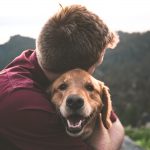
Having a domesticated animal, such as a dog or horse, can be a great source of joy for its owner. However, such domesticated animals come with a lot of responsibility and potential liability. This is so because a person injured by a domestic animal can hold its owner liable for the damages suffered by such a person, even in circumstances where there was no fault on behalf of the owner of the animal. This article will briefly consider the requirements of and defences to the actio de pauperie.
The actio de pauperie is an action that is available to someone who has suffered damages due to the conduct of another person’s domestic animal. The owner of the domestic animal will, in terms of this action, be liable for the damages caused by the animal. This article will briefly consider the requirements for succeeding with such an action, as well as the possible defences available to a defendant.
There are essentially four main requirements that must be alleged and proved in order for a plaintiff to succeed with the actio de pauperie. The first requirement is that ownership of the domestic animal must have vested in the defendant at the time of the infliction of the injuries. The second requirement is that the animal in question must have been a domesticated animal. These two requirements are rather simple and can be answered by a factual inquiry.
The domesticated animal must thirdly have acted contrary to the general nature of domesticated animals in causing the harm for which action has been instituted. This requirement is less straightforward than the first two and has been discussed in a plethora of judgments. PM Hunt has explained this requirement by stating that “[t]he contra naturam concept seems, in fact, to have come to connote ferocious conduct contrary to the gentle behaviour normally expected of domestic animals. This imports an objective standard suited to humans. It is far more refined than behaviour literally natural to that species of animal.”
This requirement has further been explained in the seminal judgment of Solomon NNO vs De Waal, with reference to injuries caused by a horse as follows:
“There was evidence to the effect that a stallion, when in the company of mares, may attack a strange male horse which comes near the mares. It does so, said the witnesses, in order to protect its interest in its female company. In principle, such conduct is, in my judgment, no different from that of a mule which kicks as a result of being upset by traffic noises… or a dog which, because of hunger, catches fowls… It is expected of such animals, because they have become domesticated, that they should be able to control themselves, and if they do not, they are regarded as having acted contra naturam sui generis.”
The last requirement is that the harm complained of must have been caused by the conduct of the animal. There must accordingly have been a sufficient causal link between the animal’s conduct and the damages suffered by the plaintiff.
A defendant in an actio de pauperie can raise various defences in order to avoid liability. A defendant to this action can firstly raise a defence in terms of which he or she alleges that the animal that caused the harm was provoked by the culpable conduct of the party who suffered the damages, a third party, or by the conduct of another animal. The person raising such a defence will bear the onus of proving the same.
The defendant can also try to escape liability by alleging and proving that a third party in charge of the domesticated animal negligently failed to prevent the animal from injuring the plaintiff. For example, a person whose dog injures another person whilst in the care of a dog sitter who fell asleep in the park could raise this defence in circumstances where, for example, the dog sitter took the dog for a walk and took the dog off its leash. The dog sitter in these circumstances could have and should have kept the dog on its leash, which would have prevented the injury. A plaintiff in such circumstances might not succeed with a claim against the owner of the dog and will need to institute a claim against the third party – the dog sitter in this case.
A defendant can thirdly defend the action by alleging and proving that the plaintiff was unlawfully present at the premises where the injury was inflicted by the domesticated animal. It is important to note in this regard that the plaintiff must not only have had a lawful purpose to be on the premises, but that they must have had a legal right to be present on the premises. Amler’s Precedents of Pleadings state that only someone with an invitation or permission, whether implied or express, will have a legal right to be present on a premises.
The last defence that falls within the scope of this article is the volenti non fit iniuria. The defendant must allege and prove in terms of this defence that the plaintiff knew of the risk of sustaining an injury from the animal and that the plaintiff voluntarily accepted such risk.
Reference List:
• Amler’s Precendents of Pleadings
• The Law of Delict in South Africa, Loubser & Midgley
• Solomon NNO v De Waal 1972 (1) SA 575 (A)
This article is a general information sheet and should not be used or relied on as legal or other professional advice. No liability can be accepted for any errors or omissions nor for any loss or damage arising from reliance upon any information herein. Always contact your legal adviser for specific and detailed advice. Errors and omissions excepted (E&OE)
